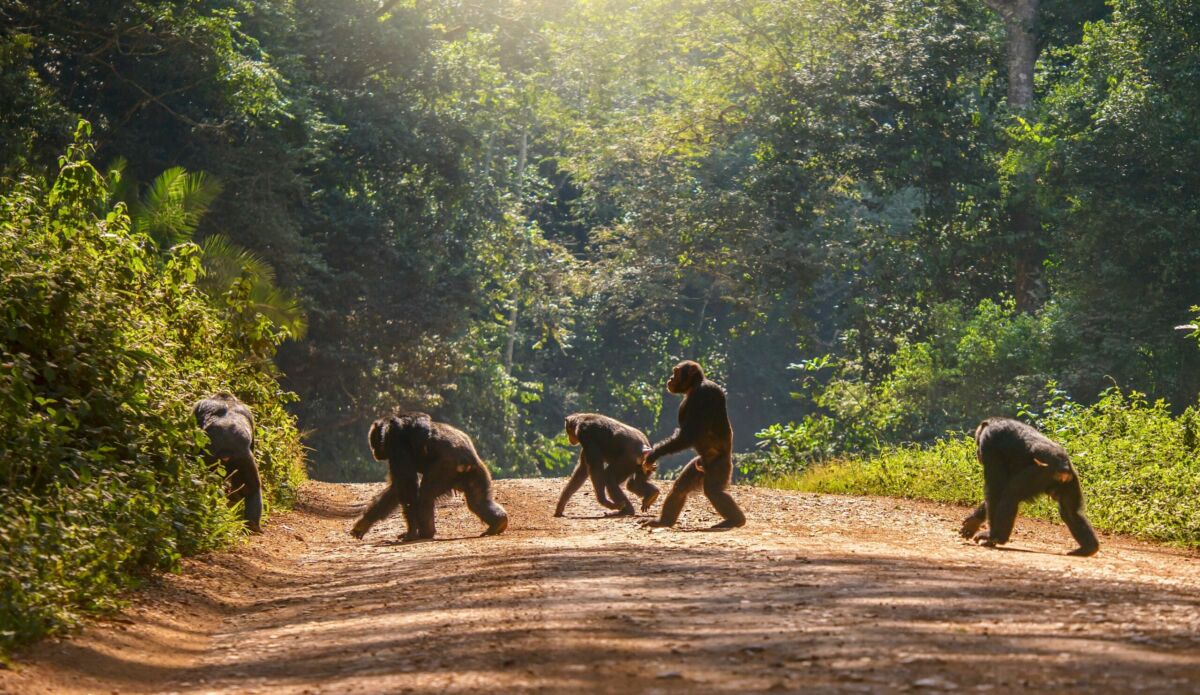The importance of ecological connectivity and the role of ecological corridors
[July 2023] This analysis highlights the importance of ecological corridors in preserving biodiversity. It brings attention to the decline in biodiversity worldwide and presents a new vision of conservation that includes connectivity between ecosystems.

- Authors : Climate Chance
- Date : July 2023
- Summary
- The worldwide decline in biodiversity
- A new vision of conservation
- Biodiversity corridors: a tool for enhancing connectivity and species adaptation
- The demonstration project in Guinea
The worldwide decline in biodiversity
Scientific data, particularly from the IPBES (Intergovernmental Science-Policy Platform on Biodiversity and Ecosystem Services), warns about the decline in biodiversity, with one million species on the brink of extinction by 2019. According to international experts, 75% of terrestrial environments are severely degraded (source: French Ministry for Ecological Transition). In 2020, the United Nations emphasized that achieving SDG 15 on biodiversity conservation would be impossible with the current state of protected areas.
Faced with this urgent situation, conservation is undergoing a paradigm shift, both in terms of its definition and the governance of protected areas, where the role of indigenous peoples and local communities in their management is increasingly being advocated.
A new vision of conservation
This approach particularly considers the level of connectivity between ecosystems, of which ecological corridors are an essential tool.
What is ecological connectivity?
Ecological connectivity refers to the unimpeded movement of species and the flow of natural processes that sustain life on Earth. It can also refer to continuous ecosystems that are often linked by ecological corridors (Updated Glossary of the Global Biodiversity Framework Project). Currently, half of all protected areas are connected according to the Protected Connectivity Indicator (Protconn).
There is also the concept of Green and Blue Infrastructure (GBI), an « approach that aims to maintain and restore a network of exchanges so that animal and plant species can, like humans, move, feed, reproduce, rest… and thus ensure their life cycle. » The green and blue network programme complements the existing range of tools for protecting natural areas (national parks, marine nature parks, nature reserves, etc.), by taking into account all the ecological continuities identified in planning documents.
Protecting Africa’s iconic wildlife, such as elephants, chimpanzees, and lions, is therefore a major concern. While establishing protected areas is the flagship approach for preserving ecosystems and protecting biodiversity and the services they provide to human societies, research also shows that their effectiveness depends on the integration of conservation projects into national and local strategies, as well as their correlation with other areas of public action, such as reforestation policies, water systems, agriculture, and the economic development of local populations. The impact of protected areas on biodiversity and ecosystem resilience is also based on establishing connectivity networks that maintain the genetic diversity of species, facilitate their natural migration, and sometimes help them adapt to climate change.
By reducing the fragmentation of natural habitats, ecological corridors serve as one form of these connectivity networks.
Biodiversity corridors: a tool for enhancing biologicalconnectivity and species adaptation
Connectivity between essential habitats within conservation networks is ensured by what are known as « corridors », which are « clearly defined geographical spaces governed and managed over the long term with the aim of maintaining or restoring effective ecological connectivity. »
Corridors can take various forms, such as hedgerows, farm tracks, and watercourses, and they are not always continuous. They can also serve as « stop-over points ». Corridors are often large-scale projects that require several years of studying species movements and mapping the terrain. Their management necessitates close collaboration between stakeholders. They are generally established around strategic areas, such as forests or waterholes, which often come into conflict with human activities that also utilize these areas. By facilitating migration, corridors also enable wild species to adapt to seasonal changes and ecological disturbances exacerbated by climate change, such as natural fires or water shortages.
Corridors that have been established since the late 1990s have only recently been evaluated. It appears that the projects with the best results are those that involve collaboration among all stakeholders and between national and local levels. This collaboration is typically facilitated by third parties, such as international foundations or NGOs, which act as intermediaries between national and local governments and local populations. These intermediaries first raise awareness of the project and facilitate communication between the various communities, before ensuring that the benefits are shared with the local populations.
The demonstration project in Guinea
Climate Chance, an organization working to strengthen international climate action by bringing together a wide range of stakeholders, expanded its activities with the announcement of the launch of the International Coalition « Biodiversity Corridors in Africa » at COP15. The aim of this initiative is to mobilize stakeholders’ coordination to share knowledge, build capacity on this cross-cutting issue, find innovative financing solutions (including offset credits), and develop demonstration projects.
In May 2023, Climate Chance announced the official launch of the Coalition’s first demonstration project, « Biodiversity Corridors in Guinea. » With the support of the Guinean Ministry of the Environment and Sustainable Development and the French Development Agency, and backed by a multi-stakeholder, cross-cutting partnership involving Biotope, Ecoact, Guinée Ecologie, Matthieu Wemaere, and the Wild Chimpanzee Foundation, the project aims to create and maintain a corridor from the north to the south of Guinea, addressing local development concerns.
Guinea is the second-largest ecological haven on the African continent, with rich and well-preserved biodiversity. The corridor, stretching from the Guinean-Senegalese border to Sierra Leone, aims to maintain connectivity between the country’s various protected areas and preserve the free movement of species. The project’s ambition is also to reconcile the economy and biodiversity by creating income-generating activities for local communities, thus enhancing their involvement in biodiversity conservation.
The methodology deployed for this project has several components: understanding the areas through a mapping of the project perimeter, implementing actions on the ground supported by appropriate funding and certification that integrates biodiversity and ecological connectivity co-benefits. The knowledge gained from establishing demonstration corridors is intended to create replicable conservation methodologies for connectivity projects elsewhere on the African continent.






